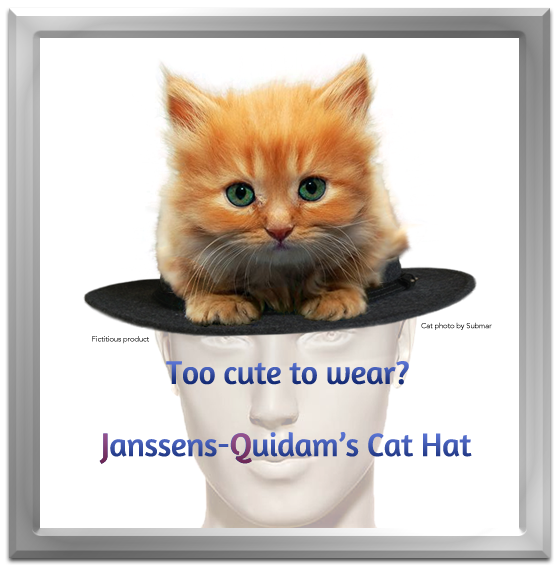Janssens-Quidam: a fictitious example
Janssens-Quidam is about to launch a new product on the Belgian market, the ‘cat hat’:

Janssens-Quidam hopes that this product, which has no particular use, will add flavour and variety to its product range. To that end, it updates its website, www.janssens-quidam.be, and announces the new product both on various blogs and web for a as well as on the main social networks (owned media). It gives a free cat hat to a Hollywood celebrity passing through Belgium, and the celebrity accepts to wear the cat hat in the presence of a number of photographers. The effect is immediate: once the photograph is published in a variety of magazines (paid media), the social media take over in attempting to find the origin of this strange hat (earned media).
One month after launch, the cat hat is already out of stock, as Janssens-Quidam did not anticipate that its product would become such a big hit. Fortunately, the new hats arrive one week later, and Janssens-Quidam is truly back in business. Financially, it will likely be a record year. Janssens-Quidam’s website receives 129,600 visitors per week on average, compared to 13,240 visitors per week on average two months earlier.
One month later, having observed a sudden drop in orders for all products, Leon (Head of Marketing for Janssens-Quidam SA/NV) carries out a search on Google.be for ‘Janssens-Quidam’. A new title has appeared among the top three results: ‘Janssens Quidam: real fur and child labour’. On the relevant web page is an article by a certain Patrick, on which Leon sees a photo of a factory full of Asian children of 6-12 years of age, creating hats in the shape of cats.
Leon knows this cannot be the Indian factory that Janssens-Quidam employs, as he visited it only two months ago, and he knows that the ‘cat’ fur is entirely synthetic. He immediately informs Management, which decides to publish photos of the real factory, with all stages of production (including the manufacturing of fake fur), on the various web pages of Janssens-Quidam. However, this attempt to rebut the rumours failed, and Janssens-Quidam’s e-reputation was severely damaged.
This was not inevitable, though: there are ways to protect oneself against such threats to the e-reputation of a company and of its product. What matters is knowing which means are permitted within the limits of the law, i.e. knowing to which extent law can come to the aid of marketing.
